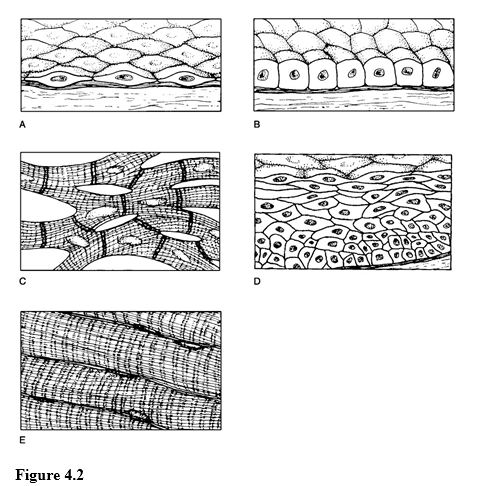The muscles that move the eye in the orbit are innervated by cranial nerves:
a. 2,3,4,6
b. 5
c. 7
d. 3,4,6
Answer: d. 3,4,6
You might also like to view...
If a child is attempting to produce [g], creating a complete closure but the place of articulation is uvular, which of the transcriptions would you use?
a) [?] b) [?] c) [?] d) [?]
Using Figure 4.2, match the following:

1) Simple cuboidal epithelium.
2) Cardiac muscle.
3) Simple squamous epithelium.
4) Stratified squamous epithelium.
5) Skeletal muscle.
Which of the following is NOT a consequence of sickle-cell anemia?
A. Sickle-shaped red blood cells are less likely to rupture. B. Tissue damage from decreased blood supply. C. Sickle-shaped red blood cells can become lodged in capillaries. D. Red blood cells take on the sickle shape when oxygen levels are low.
Which of the following carry oxygen-poor blood?
A. Aorta and pulmonary veins B. Aorta and vena cavae C. Venae cavae and pulmonary arteries D. Pulmonary veins and pulmonary arteries E. Pulmonary veins and vena cavae